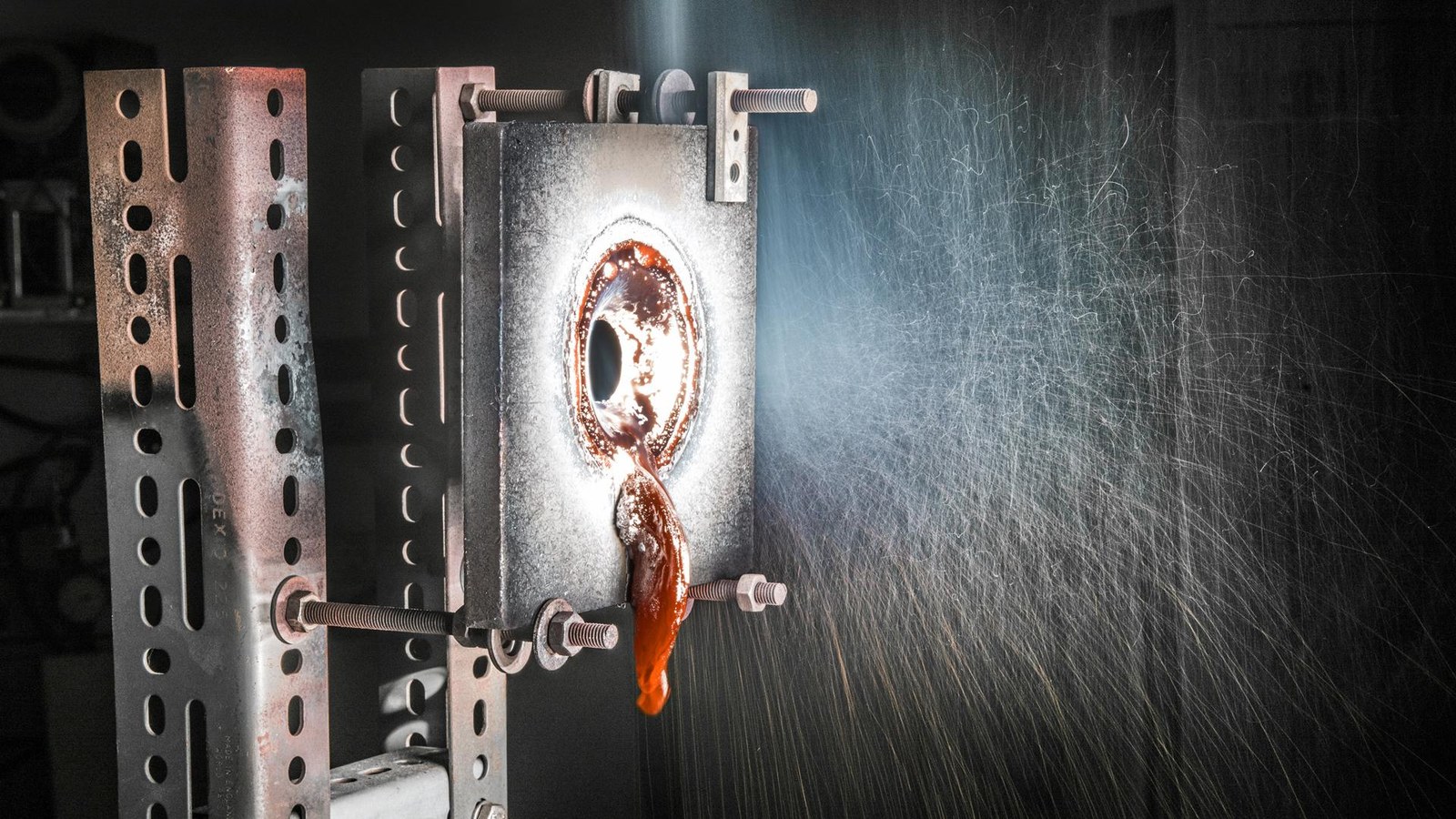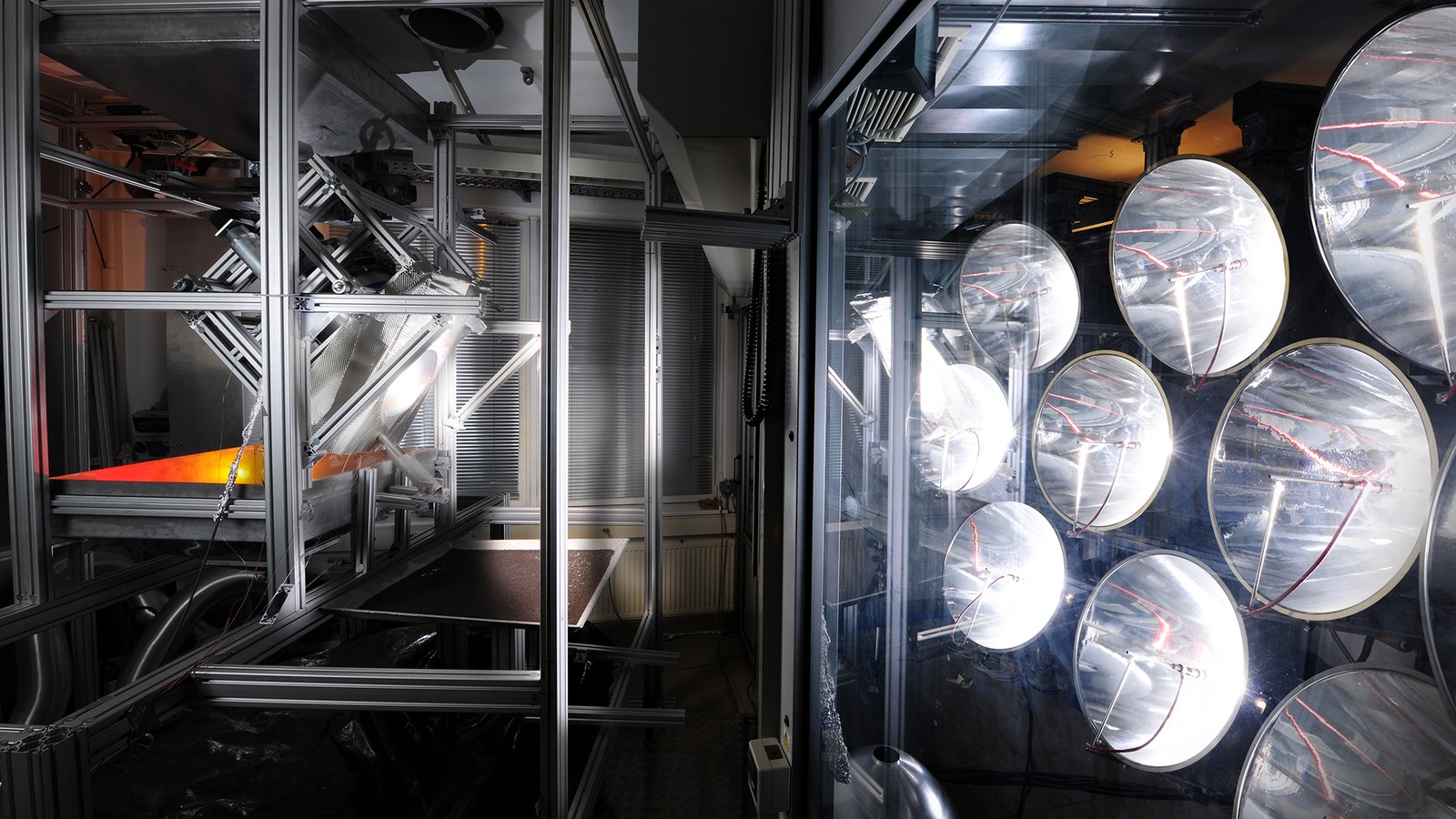Solar Furnace and Solar Simulator



The high-flux density solar furnace and solar simulator of the Institute of Solar Research and the department of Solar Chemical Engineering in Cologne produce highly concentrated solar and artificial light for the research and testing of new technologies and materials. This enables researchers to conduct experiments into hydrogen production, the testing of receiver components for solar thermal power plants and irradiation tests with materials designed for use in space.
The high-flux density solar furnace and the xenon high-power spotlights operated by the German Aerospace Center (Deutsches Zentrum für Luft- und Raumfahrt; DLR) are used to generate irradiances of up to five megawatts per square metre and temperatures of over 2000 degrees Celsius.
Concentrated sunlight to test new materials for space
The focus of this large-scale facility is on experiments for solar process engineering and solar power plants. For the first time ever, researchers here have demonstrated that hydrogen can be produced using concentrated sunlight. Here, researchers are investigating ceramic receiver elements for tower power plants by testing their temperature and shock resistance.
Space research is another field of application. The material is exposed to highly concentrated solar radiation under high vacuum conditions, similar to those encountered in space. Tests with materials and components at certification level complete the range of services offered by DLR's solar furnace. The equipment at the large-scale facility meets all of the requirements for carrying out short-duration experiments all the way up to irradiation over a period of several months under stable conditions.
Solar researchers at DLR's solar furnace advise on and support users regarding the preparation of and running of experiments. The facility's customers include European research institutes and industrial companies from Germany and abroad.
